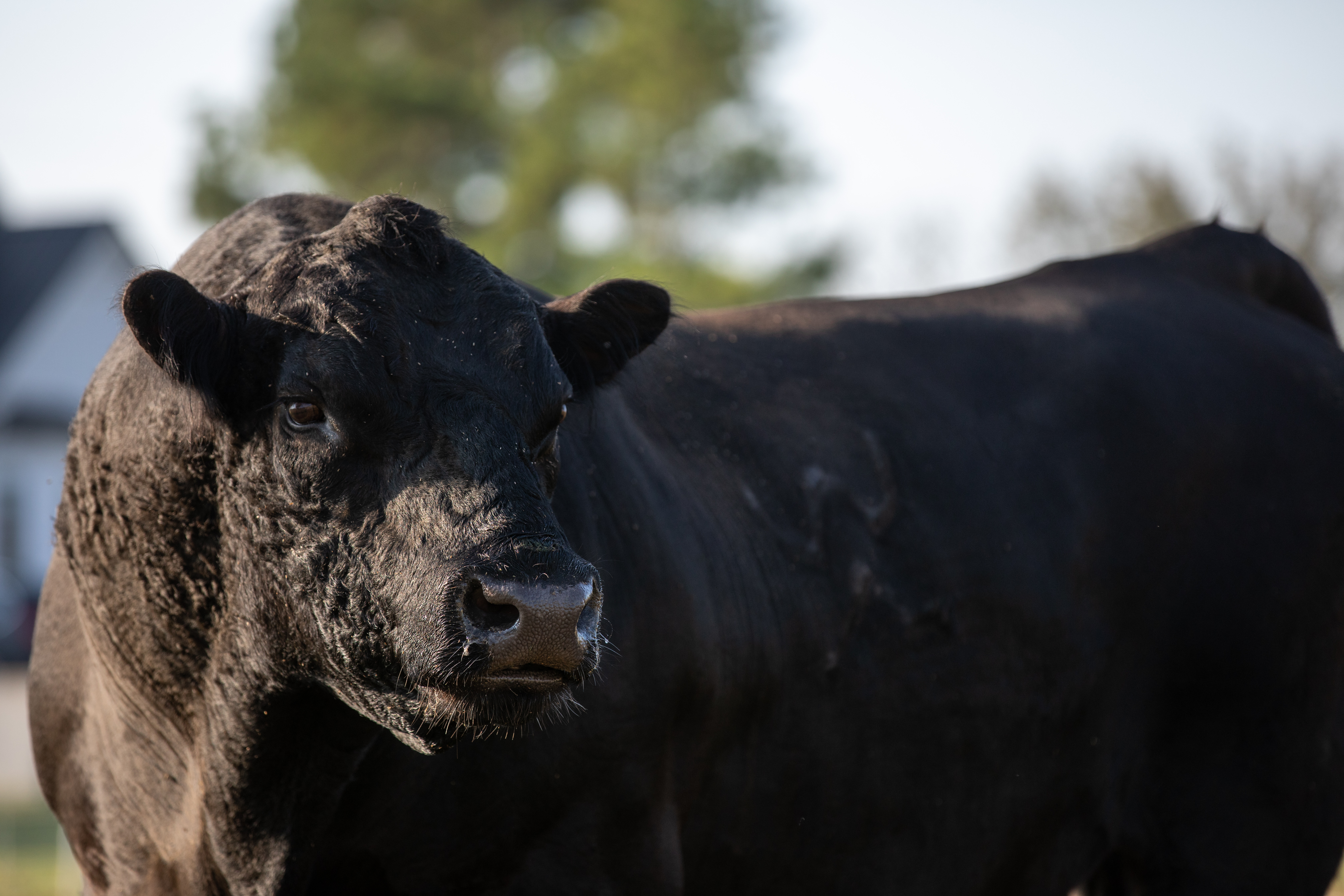
Yum: That buttery, beef-fat flavor
By Miranda Reiman
October 6, 2011
If meat scientist Daryl Tatum goes out for a “knock-your-socks-off” beef dinner, it’s going to include high levels of marbling.
Given the Colorado State University professor’s expertise, he’d probably have done that anyway, but new research by his team points out the links between key sensory attributes and quality grades.
“Marbling has kind of gotten a bum rap from a lot of people saying it really doesn’t predict much,” Tatum says. “But across the full range, it has predicative capabilities. When you can measure it precisely, it does a really good job.”
The recent work, funded by The Beef Checkoff and commissioned by the industry’s Joint Product Enhancement Committee, looked at camera-based quality grade calls and their correlation to eating experience.
“What we found was a really strong relationship between marbling and sensory properties in particular,” Tatum says.
A trained panel evaluated steaks from carcasses that were camera graded into seven different marbling scores, ranging from traces to moderately abundant, or USDA Standard to Prime. Rather than assign positive or negative ratings, panelists were asked to quantify the presence of specific flavors such as “meaty, brothy” or other descriptors. They also gave ratings on tenderness, juiciness and the overall sensory experience.
“With a trained panel, you’re trying to use them as a research instrument,” Tatum explains.
Tenderness and “buttery, beef-fat” flavor accounted for 91% of the variation in overall sensory experience; in turn, 40% of tenderness variation and 71% of variation in that desirable flavor was due to marbling score.
Tatum says that buttery flavor was not much of a factor at the lower end of the marbling range. “But it increased stepwise all the up to Prime,” he says. “It really rose pretty quickly.” Ratings for tenderness and overall eating experience rode the same escalator.
In fact, this research found marbling’s contribution to those factors was much higher than shown by work from a few decades ago.
“The relationships are stronger, and we think a lot of that is because the camera is much more consistent in calling marbling,” Tatum says. “If you improve the precision of the measurement, the predication capabilities go up. Marbling is a very, very good predictor of eating quality.”
Cargill is using camera-called marbling scores in all of its beef plants. Glen Dolezal, assistant vice president of business development and field sales leader for the company, says their experiences have been positive.
“The cameras have been a big win, a big success story,” he says. “Our customers have been very pleased with the consistency they’re getting box to box, based on marbling levels and other traits.”

He says producers benefit from those reliable calls, too, as they are trying to make genetic and management changes based on carcass data.
“Subjective grading was way too variable and somewhat of a gamble on, ‘which grader did you draw?’ Since the cameras, that has leveled out quite well,” Dolezal says.
Tatum says the Colorado research shows “the beef trade has it figured out. Prime is its own category and the upper two-thirds of Choice is another category by itself.”
The probability of a positive eating experience within the Prime grade is 98% to 99%. With modest and moderate amounts of marbling, the threshold for many premium Choice brands, the chance of a good eating experience is 82% to 88%.
That’s in stark contrast to low Choice at 62% or Select at 29%.
“When you get to that premium Choice zone, there’s not much wrong with the beef in most people’s opinion,” Tatum says. “It’s more of an insurance policy than anything. You’re not going to get a junk piece of meat once you get up at those levels.”
The Certified Angus Beef ® (CAB ®) brand includes selections from premium Choice and Prime.
“If you compare the lower part of Choice with premium Choice, there’s a pretty substantial difference in performance,” Tatum says.
Research like this is valuable to the industry, because it shows beef is sorted based on solid information. For consumers, the application is even more direct.
“If you’re going out for that occasion where you’re wanting to treat yourself, it’s pretty important to have marbling in there,” he says. “It really performs on all levels when you do.”
You may also like
$100,000 Up for Grabs with 2024 Colvin Scholarships
Certified Angus Beef is offering $100,000 in scholarships for agricultural college students through the 2024 Colvin Scholarship Fund. Aspiring students passionate about agriculture and innovation, who live in the U.S. or Canada, are encouraged to apply before the April 30 deadline. With the Colvin Scholarship Fund honoring Louis M. “Mick” Colvin’s legacy, Certified Angus Beef continues its commitment to cultivating future leaders in the beef industry.
Raised with Respect™ Cattle Care Campaign Launched This Fall
Raised with Respect™ was developed as part of a strategic cattle care partnership between Sysco and CAB. The collaboration focuses on supporting farmers and ranchers, equipping them with continuing education to stay current on best management practices and helping to increase consumer confidence in beef production.
Drought Impact and Cattle Industry Dynamics
As drought conditions persist across much of cattle country, farmers and ranchers are at a pivotal juncture in the cattle industry’s landscape. What impact does this prolonged dry spell have on the nation’s herd numbers? When will heifer retention begin? How will industry dynamics influence the spring bull sale season?



